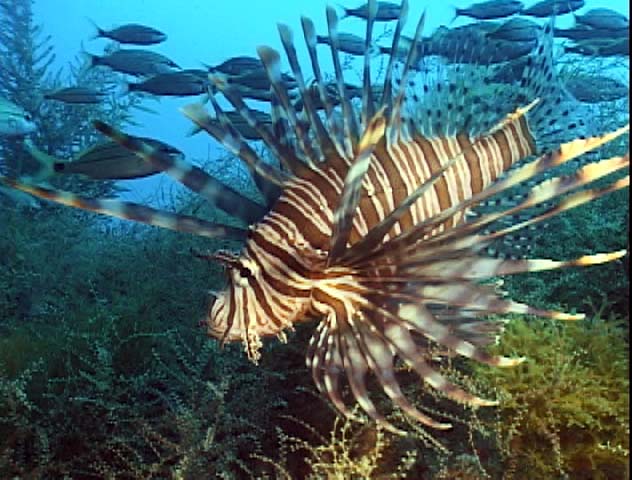Around the world, many ecosystems have been altered by “invasive species”—nonnative species that migrated or were transported to a new area. Many such species have been introduced, often unintentionally, by humans. Species may stowaway in a ship’s ballast, lay eggs or burrow into shipping pallets, or be an ornamental plant or pet that escapes.
Invasive species can have a significant impact. They are one of, but perhaps not the biggest, threat to more than 40% of species listed as endangered or threatened under the Endangered Species Act. However, whether an invasive species causes harm can be in the eye of the beholder. Last month, FiveThirtyEight‘s Maggie Koerth-Baker asked “what happens when humans fall in love with an invasive species?”
All over the world, you’ll find invasive species that are beloved by humans — even as these foreign plants and animals alter or damage the environment. The fight against invasive species is often framed as a technological problem — how do you selectively eliminate a species once it’s made itself at home in an environment? But in reality, it’s also a question of human hearts and minds. And those might be the harder obstacle to clear.
Although introduced species change the ecosystems in which they’re introduced, that is not necessarily harmful. Ecosystems are not static, but constantly changing as environmental pressures, wildlife populations, and everything else changes. As long as there have been species, they have sought ways to expand to ecosystems where they would be more successful, including by hitching a ride on other animals. As Jeff Goldblum explained in Jurassic Park, “life finds a way.”
Koerth-Baker reports that most invasive species have their supporters, as well as critics.
Turns out, this kind of nuanced story is the norm in the world of invasive species. It’s the sea lamprey — clear villains — that are the exception. In Lake Superior in 2017, for instance, the National Oceanic and Atmospheric Administration counted 82 non-native species, only about a quarter of which were harmful invasive species that provided no redeeming benefits.
In other words, the decision to accommodate or remove invasive species involves the same tradeoffs as other environmental questions. Ultimately, it depends on what sort of ecosystems “we” want? (And how you define that “we” is just as important.)
One way to identify whether harms or benefits predominate would be to use property rights. In 2014, for instance, a federal court held that the Army Corps of Engineers could be sued for creating a public nuisance by allowing invasive Asian carp to spread via the agency’s water projects.
Similarly, suppose the government failed to manage its forests to minimize the spread of an invasive insect. Neighboring property owners whose stands are threatened by this mismanagement could assert their property rights in a nuisance claim. This approach would allow people whose property interests are directly harmed by invasive species to seek redress, at least where government contributes to a species’ spread. And if others value a species’ presence more than others are harmed, they could provide compensation rather than removing the species.
Where property-rights claims aren’t available, markets still have a role to play. For instance, entrepreneurs have promoted markets as a solution to the effects of lionfish on coral and fisheries in the southeastern U.S.
Right now, invasive lionfish are out-breeding, out-living, out-eating, and out-competing native fish in the Atlantic Ocean. But entrepreneurs are quickly rising to the challenge with innovative approaches to connect supply and demand for lionfish through market solutions. With every seafood dinner, necklace, spear-fishing derby, and trap, we are one step closer to overcoming the lionfish invasion ourselves.
The signal generated by property rights and markets help to identify which invasive species are valued and which are seen as a menace. They also provide the motivation to address species that fall in the latter category.




